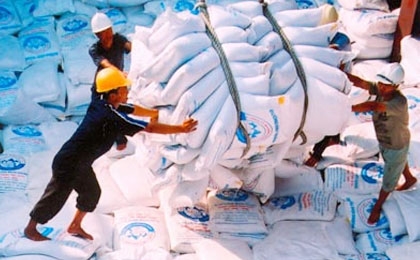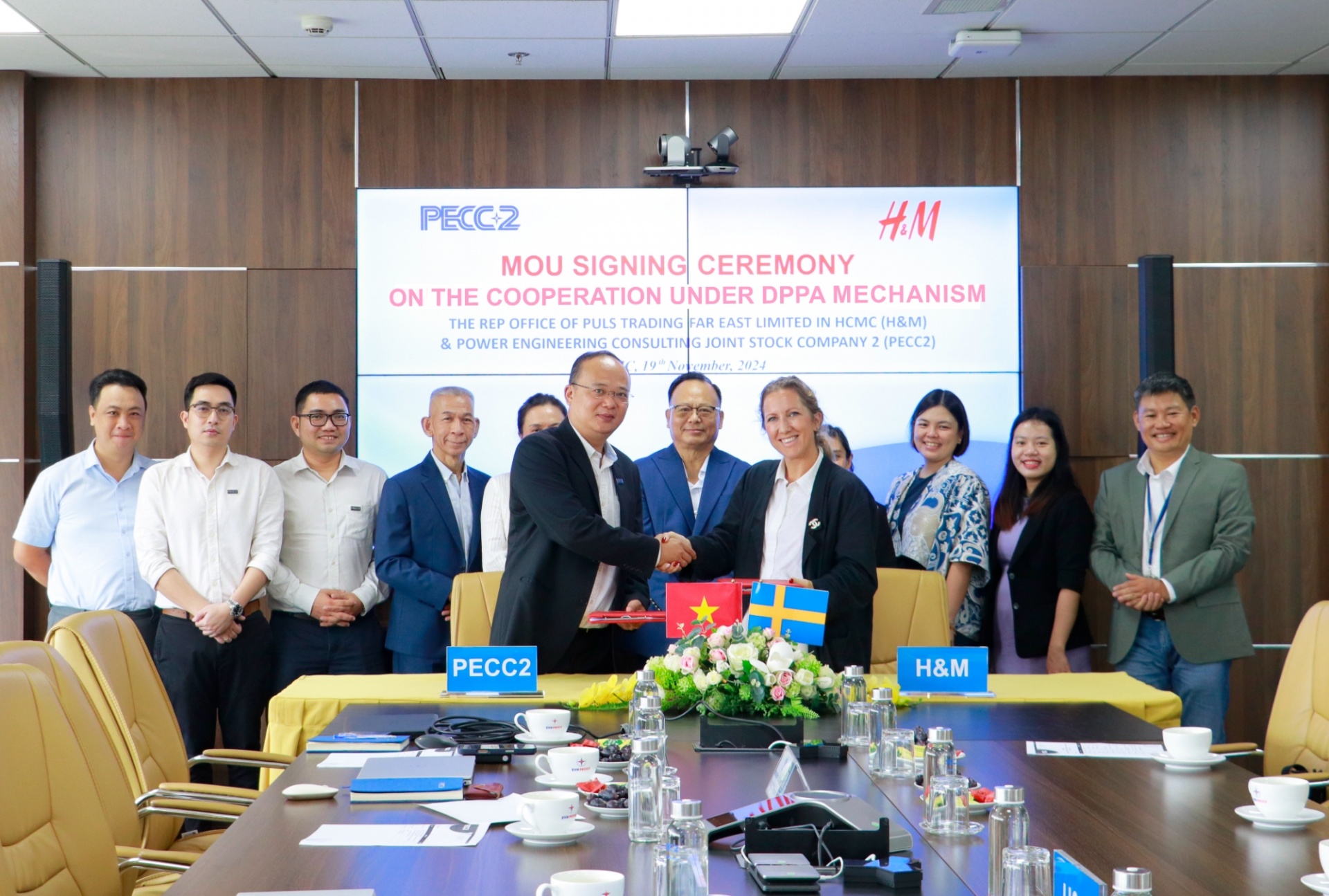Harnessing the spirit of enterprise
 However, much work remains to done if the country is to become more competitive in the face of global challenges, writes Prof. Nguyen Mai, Vice Chairman of the former State Commission for Cooperation and Investment (now the Ministry of Planning and Investment).
However, much work remains to done if the country is to become more competitive in the face of global challenges, writes Prof. Nguyen Mai, Vice Chairman of the former State Commission for Cooperation and Investment (now the Ministry of Planning and Investment).
On January 1, 2007, Vietnam joined the World Trade Organization (WTO) – an important milestone for its international economic integration.
When it joined the WTO, Vietnam vowed to open its market using a suitable roadmap for each category of goods and service in which import tariffs were to be pared down annually. By early 2011, Vietnam had already reduced import tax rates for thousands categories of products and in early 2012 the country will have to trim import tax rates for many other items like chemicals, alcohol and pharmaceutical products.
The country will have to accomplish its WTO commitments in early 2014 when import tax rates on remaining items like passenger cars come down. Growing export markets and turnover have been Vietnam’s most visible achievements since its accession to the WTO.
Benefiting from the Most Favoured Nation treatment and trade liberalisation, Vietnam’s export turnover has soared from $48.6 billion in 2007 to $62.68 billion in 2008, $57.1 billion in 2009, $72.2 billion in 2010 and $96.3 billion in 2011.
Overall, Vietnam’s export earnings in 2007-2011 soared 2.24 times compared to 2001-2006. Noticeably, while every per cent rise of export turnover in 2000 was equivalent to $145 million, in 2011 it was $960 million, or 6.2 times higher.
A lot of Vietnam’s export items have substatially grown in terms of both value and volume. Textile and apparel export earnings rose fastly to $13.5 billion in 2011 from $5.85 billion in 2006, and footwear exports grew to $6.5 billion from $3.59 billion in the respective years. At least 20 Vietnamese items have achieved an annual export revenue of $1 billion.
Vietnam’s export structure has changed for the better, with manufacturing products were responsible for 61.2 per cent of the country’s total export earnings in 2010 compared to 51 per cent in 2006.
Vietnam’s trade deficit is narrowing to below $10 billion, or 10.4 per cent of export earnings in 2011, from $14.2 billion and 29.2 per cent in 2007. Foreign invested enterprises contribute 55-58 per cent of the country’s annual export turnover and witnessed a trade surplus of $5.5 billion in 2011.

Vietnam’s export structure has changed for the better after joining the WTO
(illustration photo)
Improved FDI and trade
Foreign direct investment (FDI) has been an economic highlight since Vietnam joined the WTO. As accessing the organisation, Vietnam has seriously implemented measures towards making policies more transparent, enhancing institutions and accelerating administrative reform. Thus, a more attractive investment climate has been created for foreign investors and enterprises.
As a result, committed FDI in Vietnam has risen from $12 billion of 2006 to $21.3 billion in 2007, $64 billion in 2008, $23.1 billion in 2009, $18.6 billion in 2010 and about $15 billion in 2011.
However, the most important indicator is disbursed FDI, which hit just $4.1 billion in 2006 but expanded to $8.03 billion in 2007, $11.6 billion in 2008, $10 billion in 2009, $11.5 billion in 2010 and about $11.5 billion in 2011.
Total disbursed FDI in the 2007-2011 period was $51.13 billion, which is 2.84 times higher than the $17.95 billion during 2001-2006. And given the global FDI decrease caused by the global economic downturn, Vietnam is still viewed by many foreign investors as an investment destination with great potential.
Vietnam’s WTO accession has forced local enterprises to compete with foreign competitors. The opening of the distribution sector in early 2009 worried many local enterprises who thought their foreign rivals with good financial health and business experience would soon control the country’s wholesale and retail markets.
Though Vietnam’s retail market size is relatively small – it had a value of VND970 billion ($55 billion) in 2008 – it has developed rapidly. As a result, Vietnam has consecutively received a high rank in the Global Retail Development Index.
According to the American-backed consultancy firm A.T.Kearney, Vietnam last year had the most attractive retail market in the world, followed by India, China, Egypt, Morocco and Saudi Arabia.
Vietnam’s opening up of its distribution sector has been an important step in the country’s integration into the international economy and has helped the country keep abreast with regional countries.
However, the opening may also deprive some local distributors of competitive advantages. For example, their market share will shrink and they may even suffer bankruptcy if they fail to improve the quality of their services. This is in line with the competition law in any market-based economy.
Nevertheless, many Vietnamese firms have established a solid niche in the local market thanks to because they have improved their product samples and quality and prices.
As a WTO member, Vietnam has fully participated in global economic institutions, while being exposed to direct and immediate impacts from all the economic challenges faced by the global economy.
On the one hand, this has enabled the country’s economy to march in step with the regional and global economy. On the other hand, there has also been external pressure related to volatile international prices of goods and services.
During the first year of Vietnam’s WTO accession, the economic situation domestically and internationally was rather stable. Thus the country’s economic indexes were quite good, with gross domestic product (GDP) increasing by 8.46 per cent and consumer price index (CPI) rising by 8.3 per cent.
However, 2008 saw two different situations. The year’s first three quarters were marked by high inflation and the last quarter was characterised by deflation because of global economic downturn. GDP and CPI growth were by 6.31 and 22.97 per cent, respectively.
During 2009 and 2010, global economic uncertainties continued to badly affect Vietnam’s economy, with GDP in 2009, 2010 and 2011 increasing by 5.32, 5.83 and 6.13 per cent, respectively, while CPI in those years climbed by 6.88, 9.54 and 18.13 per cent, respectively.
Room to manoueuvre
Has Vietnam been badly affected by the global financial crisis because of its ever-deeper integration into the world’s economy? Or are the negative effects a result of Vietnam’s lack of reliable forecasts about fluctuations in the global goods and monetary markets? Has the country failed to take the initiative and equip itself with mechanisms to avoid and cope with risks so as to be able to take advantage of opportunities arising from its WTO membership?
In reality, once a nation starts playing on the global stage, it should take measures to both promote its competitive advantages and deal with risks to protect its national benefits in a world of competition and cooperation.
Success on the global stage consists in a nation being competitive at all national, enterprise and product levels. Vietnam’s outstanding achievements in international trade should be products with the quality, prices and samples of the country’s products that can compete in its key export markets like the US, European Union and Japan.
Vietnam’s annually disbursed $10 billion in FDI has been the result of the country’s continually improved investment environment which has lured big potential foreign investors. Nevertheless, Vietnam’s progress has done little to help its ability to forecast world market developments.
The world’s leading nations and enterprises have adopted optimal development models. Large nations like China and India are capitalising on the economic downturn in developed nations to develop into the world’s leading economies.
Meanwhile, during its five-year WTO membership Vietnam’s institutional reform toward investment and trade liberalisation is not systematic, transparent or stable enough. In addition, the nation’s enterprises and the country’s competitiveness have failed to meet requirements for the new stage of development. Moreover, a scarcity of high-quality works has impeded Vietnam from receiving hi-tech FDI projects.
What follows is selected evidence of Vietnam’s national level and provincial level of competitiveness. According to a Vietnam Business Forum 2011 report released early last month, some 35 per cent of 240 firms surveyed (80 per cent local enterprises and 20 per cent foreign firms) said there had been positive changes in many sectors. For example, 61 per cent, 17.09 per cent and 20.94 per cent of surveyed enterprises saw improvements in administrative procedures, land access and tax procedures, respectively.
However, as for perception on the ease of doing business in 2011, the average score given by correspondents was 2.04 with the maximum score was four. This was much lower than the 2.52 score for 2010. None of the 14 surveyed business sectors achieved a score higher than three.
The score for access to information and legal regulations was 2.7, while those for the tax system, business costs and construction were 2.41, 2.42 and 2.23, respectively. Correspondents also said the government’s measures to curb inflation, and management of lending rates and exchange rates worried them most in 2011.
Foreign-invested enterprises are far more pessimistic about Vietnam’s business environment than local enterprises, because they compare Vietnam with other nations like China, Thailand and Indonesia.
As for the provincial competition index (PCI), the PCI 2010 conducted by Vietnam Chamber of Commerce and Industry and USAID looked at over 7,300 enterprises and examined them for nine indexes. The report found the provincial level economic management had not improved.
Only Danang (69.77 scores), Lao Cai (67.95 scores) and Dong Thap (67.22 scores) were classified as “quite good”. Thus, based on results from its WTO action programme of 2007, the government needs to build an action programme on international economic integration for 2012-2015.
This is necessary to guide sectors to take concerted action to participate in Vietnam’s bilateral and multilateral trade agreements. This will improve Vietnam’s trade and FDI attraction.
What the stars mean:
★ Poor ★ ★ Promising ★★★ Good ★★★★ Very good ★★★★★ Exceptional
 Tag:
Tag:
Related Contents
Latest News
More News
- VIR sustainable development conference opens in Hanoi (November 12, 2024 | 09:42)
- Taking the lead in dual transition for a greener Vietnam (November 11, 2024 | 17:00)
- Vietnamese consumers careful amid economic volatility (November 11, 2024 | 13:55)
- Quality must come first in chip mission (November 11, 2024 | 10:33)
- Vietnam's digital economy estimated to reach $36 billion in 2024 (November 07, 2024 | 13:52)
- Authorities looks to tackle influx of cheap foreign goods (November 07, 2024 | 10:44)
- Trump claims 'magnificent' victory over Harris (November 06, 2024 | 16:55)
- Trump on verge of victory over Harris (November 06, 2024 | 14:26)
- Hanoi unveils innovative tourism event to celebrate cultural heritage (November 06, 2024 | 13:36)
- FDI hits over $27 billion in first 10 months (November 06, 2024 | 13:24)

























 Mobile Version
Mobile Version